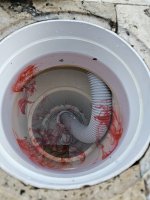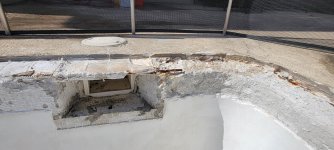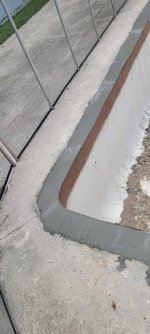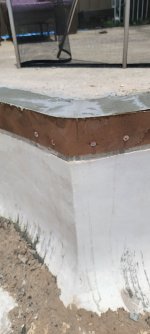
Two years ago, my dad had his pool redone by someone who turned out to be very incompetent. To make this short, I will leave out some of the reasons why.
Basically, the work done involved applying new plaster and raising up the coping by pouring concrete on top of the existing pool shell and making a cold joint in the process. The coping was raised to accommodate new pavers. For whatever reason, he ended up not raising up the entire skimmer to compensate for the new height of the pool. This was not a concern because the pool was originally plumbed with only a skimmer and a main drain, no vacuum port in the wall, so we've always just plugged the vacuum into the skimmer as the picture shows. When the surface gets dirty, we just clean it with a net.
The problem now is that once the water level rises past the old maximum height of the pool, it leaks out and leaves no trace as to where it's going. As mentioned, the coping was raised with the company nailing flexible wood to the walls and creating a form to pour the new concrete.
No waterproofing of any kind was done. They just applied mortar and then thinset to bond the new tiles. This leads me to think that maybe the water is seeping through this cold joint.
I tried dripping dye into the skimmer to see if it's leaking past the ring that was installed when the pavers were laid the following year, but the dye doesn't rush into the plastic joint or anything like that. I know it's not sealed and given that it's really wedged in there, I don't see how it could be removed and solvent cemented. In the picture, you can see the riser ring and the old skimmer.
I've already come to terms with the fact that there's probably nothing that can be done, but I just wanted to see if there's any insight anyone might provide.
A final word: you can fill the pool all the way to the top and by the next morning, the water will be back to the height of the old coping and it stays there, telling me the rest of the plumbing/shell isn't leaking. This problem came about after having the pool redone.




